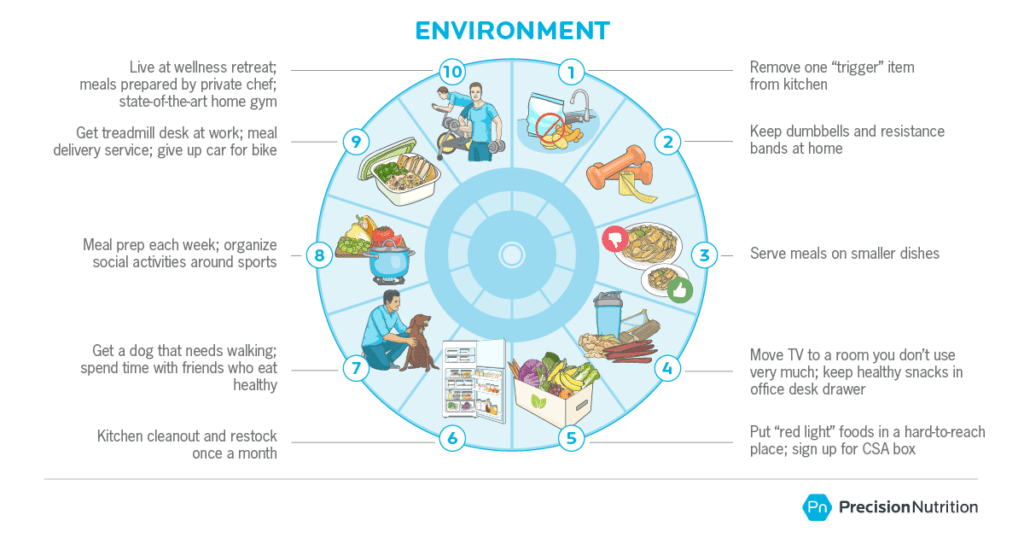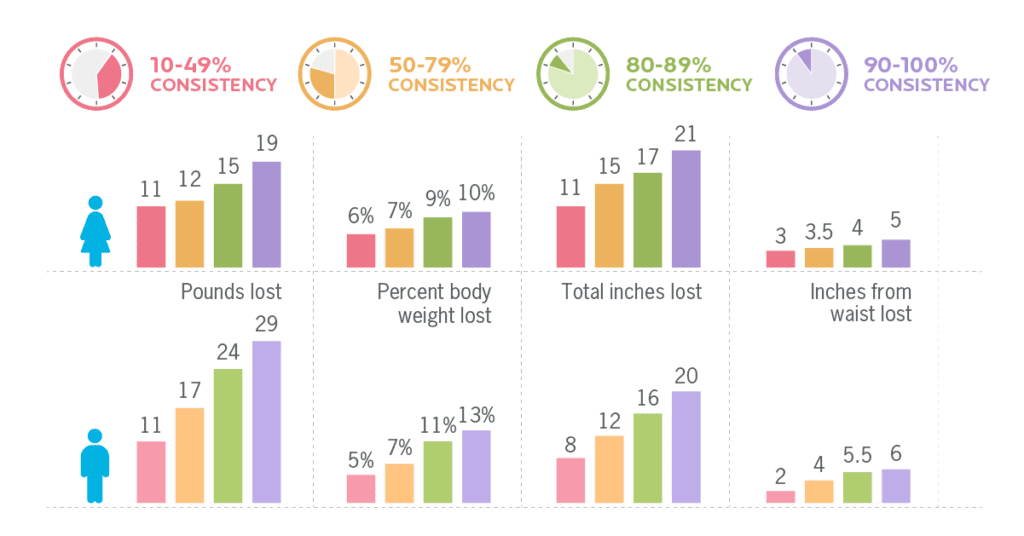New Year’s resolutions have become a bit of a joke.
Folks in the health and fitness industry get frustrated with clients desperate to shed holiday weight gain, only to ghost them in February.
Gym goers feel annoyed when their normal routine is interrupted by the January rush. (C’mon, line-ups for the squat rack?!)
And then there’s the media, reminding us every year that New Year’s resolutions are a one-way ticket to Failure Town.
But turns out, this isn’t necessarily true.
There’s something called the “fresh start effect,” and it’s real.
Research shows the fresh start effect can help clients:
- Take a chance to try again at something they’ve nearly given up on
- Renew their interest when they get bored
- Move forward with more confidence and motivation than before
In this article, we’ll show you why the fresh start effect works. Plus, we’ll provide five simple methods you can use with your clients any time of year.
Why New Year’s resolutions can be helpful
Imagine a client comes to see you. They’re wearing a backpack.
They tell you they want to eat better. “For real this time,” they say.
You notice their shoulders look tired. Their backpack appears heavy. So you take a peek inside to see what they’re carrying.
Inside the backpack is your client’s history with this habit. It’s full of their perceived failures and disappointments, their guilt and shame, their stories about why they haven’t succeeded before.
As a coach, you have two options:
You can tell your client to “just keep going” or “try harder,” and carry that backpack with them.
Or, you can invite them to take the backpack off.
A fresh start allows us to let go of our baggage, and start anew.
“Fresh starts are powerful because they serve as a belief disruptor,” says Karin Nordin, PhD, Behavior Change Expert and PN Certified Coach. “They allow us to believe new things about ourselves, which is especially important if we’ve failed in the past.”
Here’s how it works:
Suppose you set a New Year’s resolution to start running.
In your mind, your “old self” (the one glued to the couch) expires December 31. Your new self (the one who runs!) begins January 1.
Because your brain distinguishes between these two selves, it’s much easier to believe that your “new self” will succeed.
That might sound silly: After all, you won’t actually magically transform the moment the ball drops on New Year’s Eve or a new calendar day dawns.
But human psychology is a funny thing, and this separation of self enables us to release ourselves from our past “failures,” and believe that a different way forward is possible.
That belief is critical for behavior change.
“When we believe we can get better at something, we develop self-efficacy,” says Dr. Nordin. “Self-efficacy leads to increased motivation, enabling us to tackle the challenges in front of us, which ultimately leads to behavior change.”
Do 80 percent of New Year’s resolutions fail?
You’ve probably seen the statistic. But what’s the real story behind it?
According to Dr. Nordin, it comes from a study that was published in 1988—nearly 30 years ago.
(Pretty old considering there’s a massive recent body of research on behavior change.)
What’s more:
- The sample size was only 200 people. (Not nearly a large enough sample to TOTALLY change the consensus on resolutions.)
- The participants were random people surveyed by phone (which isn’t the most reliable reporting method).
- Thirty percent of the participants were resolving to quit smoking. (Since smoking has an addictive component, it might negatively skew results compared to a study on, say, resolving to exercise.)
- The statistic of 20 percent success comes from a two-year followup. At the 6-month mark, participants’ success rate was closer to 40 percent.1
Meanwhile, more recent studies have suggested that resolutions can in fact be an effective tool in habit change.
For example, a 2002 study published in the Journal of Clinical Psychology compared people who made New Year’s resolutions with those who didn’t. The resolution-makers reported considerably higher rates of succeeding with their goal than non-resolvers: at six months, 46 percent of the resolvers were continuously successful compared to 4 percent of the non-resolvers.2
Obviously, setting resolutions is not a guarantee of success. But it could be worth trying regardless.
“If the odds of keeping your resolutions are roughly 40 percent—or even less—it might be worth giving it a shot,” says Dr. Nordin. “After all, if your odds of winning the lottery were 40 percent would you take that bet? I’m guessing you would.”
5 ways to make better New Year’s resolutions
Fresh start method #1: Pick a temporal landmark
Temporal landmarks are moments that stand out in time.3 “Monday” is a temporal landmark. So is your birthday, New Year’s, and the summer solstice, to name a few.
Think of temporal landmarks like milestones or touchpoints. They help us put our life—where we’ve come from, and where we’re going—into context.
Temporal landmarks might seem arbitrary, but they play a valuable role in change psychology.
“Your brain likes to distinguish between versions of yourself,” says Dr. Nordin.
“Temporal landmarks allow us to separate our two identities—our ‘old’ self and our ‘new’ self. When we separate these two identities, it can become easier to believe that change is possible.”
A wide body of research on temporal landmarks exists. Consider this example from a large 2021 study by University of Pennsylvania researcher and esteemed change expert Katy Milkman, PhD.
Participants were given the opportunity to choose between increasing their contributions to a savings plan immediately—or at a meaningful future date (for example, the recipient’s birthday, or the first day of spring).
Those who chose a meaningful “fresh start” date contributed more to their savings than participants who started saving right away (without a significant date).4
A few ways to use this technique with your clients:
▶ Give new clients a clearly defined start date.
Choose a concrete date and clearly communicate it to your client.
You can also share some advance messages to build anticipation, like, “Your first session is coming up! Change is about to start happening!”
▶ Align new programs, challenges, or initiatives with a special occasion.
It doesn’t even matter what it is: the first day of spring, World Health Day, or National Cinnamon Bun Day (yep, it’s a thing).
Pick a day that matches your launch date and let clients know what it is.
▶If clients slip up, help them begin again with a new start date.
“Fell off the wagon? No big deal. We’ll start fresh in your session on Tuesday next week. Mark it in your calendar as your ‘Clean Slate’ day.”
▶ Encourage clients to align goals with dates that are meaningful to them.
It doesn’t work for everyone, but if your clients get excited about birthdays, New Year’s resolutions, or other milestones—go with it.
Fresh start method #2: Do a “30-day trial”
Trying something new—especially within a contained time period, like 30 days—can give clients a fresh start anytime of the year.
As with temporal landmarks, a trial can make change feel possible, particularly since it has an expiration date. (It can feel a whole lot easier to do something for 30 days than, say, a lifetime.)
PN Master Coach Kate Solovieva, MA, likens this to “try before you buy.”
Like a “free trial,” this approach to habit change allows your client to try something new and see how it works for them, with no pressure to keep it.
Solovieva likes this method because the client doesn’t even have to stick with it in order to get value from the exercise. “You almost always improve, or at least learn something from the experiment,” she says.
A couple of examples:
▶ Example #1: Your client wants to eat less meat.
One option could be to try vegetarianism for 30 days. There’s no pressure to become a lifelong vegetarian; just treat the diet as an experiment and see what happens.
At the end of the 30 days, maybe the client’s certain that #veggielife is NOT for them.
But perhaps now they’ve learned how to cook beans, or discovered they actually enjoy tofu. Maybe meat is reintroduced as a regular feature, but they’ve still moved along the continuum towards eating less meat overall.
▶ Example #2: Your client wants to get more exercise.
Solovieva suggests doing a 30-day trial where they move their body in some way every single day. Make the baseline doable, such as a five-minute routine they can do at home, or a daily walk.
“Chances are, the person will be super impressed with themselves,” she says. “They go from thinking of themselves as someone who never moves to someone who exercises every day. That’s a big shift.”
Doing a habit, however small, for 30 days can provide a powerful boost in confidence. From there, you and your client can discuss how to build on the new baseline they’ve established.
(Another awesome 30-day challenge? Slow eating. Seriously.)
Fresh start method #3: Look back before looking forward
If your client needs a fresh start, particularly if they’ve fallen off the wagon, a simple reflective exercise can help.
When we look back on our past efforts, and reset our focus on what’s coming, we naturally draw a mental line in the sand, distinguishing between “past” and “future”—thus giving us the feeling of a fresh start.
To make use of this, try a simple exercise called “Looking Back, Looking Forward.”
This handy set of prompts, courtesy of Precision Nutrition Co-Founder Dr. John Berardi, invites clients to reflect on their past efforts, release any disappointments, and celebrate their accomplishments—and then, recast their focus on the future.
Use this exercise when your client needs a “clean slate.”
You can also make it a regular part of your coaching practice. Dr. Berardi recommends revisiting it with clients every few weeks.
To try it, take your client through the following questions. (Or, download this free PDF: Looking Back, Looking Forward)
Part 1: Look back
▶ Over the past weeks, what have you put the most effort into?
▶ What are you most proud of?
▶ What more would you have liked to accomplish?
▶ How will you celebrate your progress (in a healthy way)?
Part 2: Look forward
▶ What are you most looking forward to? (What goals, challenges, or projects are you excited about and ready to tackle?)
▶ What advantages do you think you have that’ll make progress more likely? (Consider what unique abilities or superpowers you possess that could help you out.)
▶ What things are likely to stand in your way? (Are there any obstacles you can anticipate in advance?)
▶ How can you prepare, right now, to make sure those things don’t get in your way?
(For more advanced coaching tools and techniques, check out our #1 rated Nutrition Coaching Certification.)
Fresh start method #4: Change up the environment
Quick: When you walk into your home, where do you put your keys?
Chances are, you put them in the same place you’ve been putting them since the day you moved in.
Our environment (the people, places, and things around us) plays an important role in habit formation, and habit change.5 When our environment stays the same, we’re less likely to change.
But mix things up, and something interesting happens.
“When we shift to a new environment, our habits are broken because they were tied to cues in our previous environment,” says Dr. Nordin. “If you want to feel like you’re making a fresh start, changing your environment intentionally in some way can initiate that effect.”
Some ideas to help your client mix up their environment to get a fresh start:
▶ Conduct a kitchen makeover.
Help your client go through their pantry and fridge.
Toss (or, if appropriate, donate) any foods that don’t support their goals. Then, assist them in re-stocking it with foods that do.
▶ Invite your client to do a social media audit or ‘detox.’
Social media can become an automatic habit that doesn’t always serve us.
This is especially true if your client struggles with self image or keeps getting distracted by the latest trends from influencers.
Encourage them to unfollow anything they find triggering or unhelpful, or take a break from social media altogether.
▶ Suggest a closet clean-out.
This may be especially useful if your client is having trouble moving on from a past (younger and possibly leaner) version of themselves.
Get rid of clothes that no longer fit or feel good, and make room for clothes that fit the “new you.”
▶ Set up an exercise space.
Simply putting out a yoga mat and a few exercise bands can make someone feel like they’re turning over a new leaf.
(Bonus: If that exercise equipment is visible and handy, you’re WAY more likely to use it.)
▶ Help them design a “mobile gym.”
We might not think of it as our “environment” but many people spend a lot of time in their cars.
If your client is a commuter, invite them to do a car clean-out—especially if they have to kick their way through a pile of fast food wrappers to find the gas pedal—or even turn their car into a “mobile gym” by stocking it with a gym bag, pair of sneakers, and some protein bars.
▶ Make any small environmental adjustment.
“Even just rearranging your furniture works,” says Dr. Nordin. Regardless of your client’s health goals, simply making their surroundings feel slightly new or different can trigger the fresh start effect.
(For more ideas on how to use your environment to support your goals, read: Train your environment and watch your habits follow)
Fresh start method #5: Choose a guiding word
“Many clients want a fresh start but struggle to explicitly define what that means,” says Solovieva.
“Maybe they want to be healthier, or feel better. I even had one client tell me they wanted to feel less hazy. What does that actually mean?”
In these cases, Solovieva recommends choosing a definitive word that provides more guidance, yet lots of flexibility.
This practice is popular at New Year’s.
Rather than making specific resolutions, some people choose a “Word of the Year.”
But you can do this any time of year, particularly if it represents a new phase of life—pregnancy, divorce, a move, or starting a new job.
Seasons work well, too: Your client might enjoy choosing a word for winter, or spring.
“You could choose a word to correspond with a client’s program,” says Solovieva.
“You might say, ‘We’ve committed to working together for the next three months. Why don’t we come up with a word that represents what you’d like this time to be about?’”
The word they choose can then act as a natural decision-making filter or North Star in your work together.
For example, if their word is “peace,” together you might strategize ways to make their eating habits, workouts, or environment more peaceful.
To help your client choose their word, Solovieva recommends asking them a few questions, such as:
- What do you want this period of time to feel like?
- Where do you want to put your focus?
- What’s important to you in this coming year?
- Which word would describe who you want to be this year?
A word can provide a sense of a fresh start because, much like resolutions, it gives us a feeling of a new identity, a new self, a new phase of life.
And, it allows us to change our behavior and take actions in favor of the change we’re trying to create.
But it also has the benefit of less rigidity. If your goal is to work out three times per week and you don’t do it, it’s easy to feel like a failure pretty quick.
On the other hand, if your word is “joy,” you could pretty easily find ways of moving joyfully regardless of whether or not you get to the gym on schedule.
Importantly, a guiding word (like any of these methods) can serve a purpose for a time and place.
But there’s no pressure to stick to it forever and ever.
With approximately 80,000 nouns in the English language, if your guiding word stops working for you, you can always pick a new one.
After all, that‘s the beauty of the fresh start.
No matter how many times we fall down, there’s always another chance to begin again.
References
Click here to view the information sources referenced in this article.
If you’re a coach, or you want to be…
You can help people build sustainable nutrition and lifestyle habits that will significantly improve their physical and mental health—while you make a great living doing what you love. We'll show you how.
If you’d like to learn more, consider the PN Level 1 Nutrition Coaching Certification. (You can enroll now at a big discount.)





Share